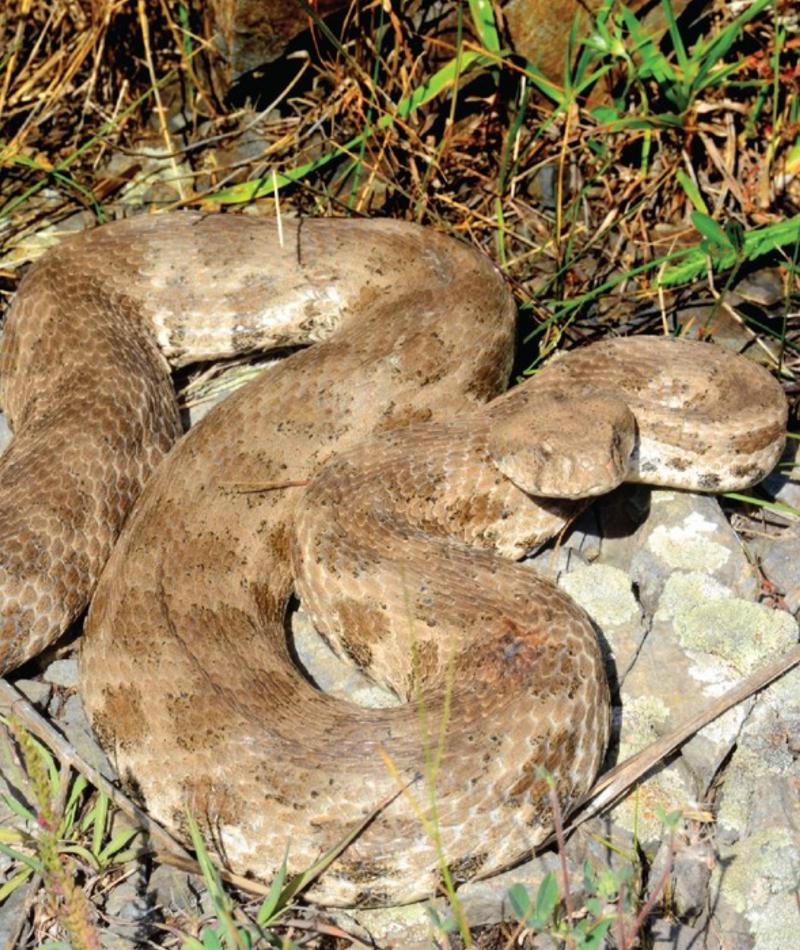
Caucasus Blunt Nosed Viper
Macrovipera lebetina obtusa
- Caucasus blunt-nosed vipers are part of the Viperidae family, which they share with other vipers.
- They live in throughout the Middle East and Western Asia.
- They can grow over four feet long.
- They are venomous.
- They are oviparous.
Ambush Predator
Caucasus blunt-nosed vipers can grow over four feet long. Being so large, they are incredibly venomous and have the making of a perfect ambush predator. An ambush predator captures its prey with strategy, rather than strength or speed. Often, this viper will hide and wait for passing prey. Once it sees its next meal, it will launch a surprise attack on its victim.
Saving This Snake
Through the Saint Louis Zoo WildCare Institute Center for Conservation in Western Asia, for more than 10 years, Zoo staff have studied Caucasus blunt-nosed vipers that live in high elevations, specifically in Armenia. This research has helped Zoo staff model the vipers’ habitat at the Zoo after their environment in the wild. Armenia is considered a biodiversity hotspot, with an exceptional level of diverse and unique plants and animals.
Threat Level
- Unknown
- Common
- Near Threatened
- Threatened
- Endangered
- Critically Endangered
- Extinct in the Wild
Common
The Caucasus Blunt Nosed Viper is widespread and abundant.
Range
The Middle East and Western Asia
Habitat
Dry and well-vegetated rocky mountainous areas

We care about caucasus blunt-nosed vipers
The Saint Louis Zoo supports Caucasus blunt-nosed vipers in the Charles H. Hoessle Herpetarium at the Zoo. This species is just one of many that we are working to protect in the wild through the Saint Louis Zoo WildCare Institute Center for Conservation in Western Asia. Learn more about these efforts.
Find this animal in Historic Hill

SAINT LOUIS ZOO ZONE
Historic Hill
Historic Hill is a lovely stroll through one of the oldest parts of the Saint Louis Zoo. From the 1904 World’s Fair Flight Cage to the Spanish architectural flavor of the 1920s in the Bird House, Primate House and Herpetarium to the finishing touches of our thoroughly modern exhibits, this area of the Zoo has a unique ambiance and a nostalgic history that make it a great destination.

